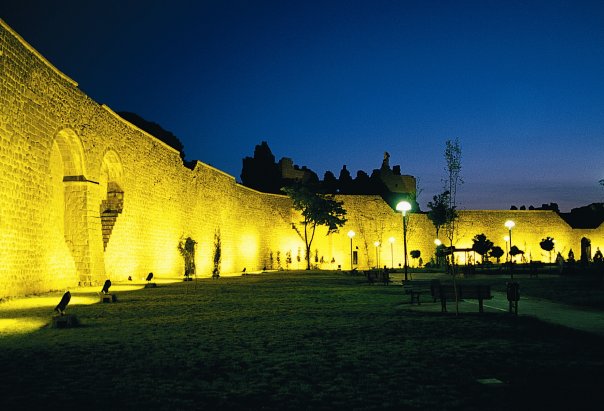Diyarbakir
 |
| Diyarbakir |
Diyarbakir rises above the right bank of the Tigris River (Dicle) to the north of the Mesopotamian plain. Many thousands of years ago, the volcano Karacadag, now extinct, erupted leaving a thick layer of basalt. Diyarbakir, which has its foundations on this black basalt stratum, is known as “the Dark” because the walls and much of the old town are constructed from the rock.
The region of Diyarbakir saw a succession of civilizations such as the Hurrites, Mittanians, Arameans, Chaldeans, Assyrians, Urartians, Medes, Persians, Macedonians. The city, known at the time under the name Amida, from 115 AD, was at stake in the wars between the Romans and the Parthians and later the Sassanids. Finally in 297 AD, Amida was annexed to the Roman Empire. A fortress was built on the hillock overlooking the city and in 349, Emperor Constance surrounded it by walls that later were reinforced by the Byzantines and particularly in the 6th century under the reign of Justinian, to face the continuous Sassanid threat. But aroud 638, the tremendous walls could not resist the attacks of the Arab tribes regrouped unter the banner of Islam and who had set out to capture Syria, Mesopotamia and Iran, after defeating the Byzantines on the banks of the Yarmouk River (which delimits the modern border between Jordan and Syria) in 636.
Source : guide-martine
.jpg) |
| Diyarbakir |
 |
| Diyarbakir |
 |
| Diyarbakir |
.jpg) |
| Diyarbakir |
.jpg) |
| Diyarbakir |
.jpg) |
| Diyarbakir |
.jpg) |
| Diyarbakir |
.jpg) |
| Diyarbakir |
 |
| Diyarbakir |
 |
| Diyarbakir |
 |
| Diyarbakir |
 |
| Diyarbakir |
 |
| Diyarbakir |
 |
| Diyarbakir |

.jpg)


.jpg)
.jpg)
.jpg)
.jpg)
.jpg)






No comments:
Post a Comment